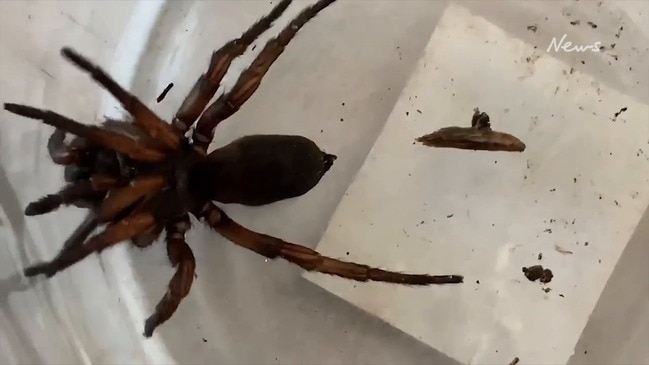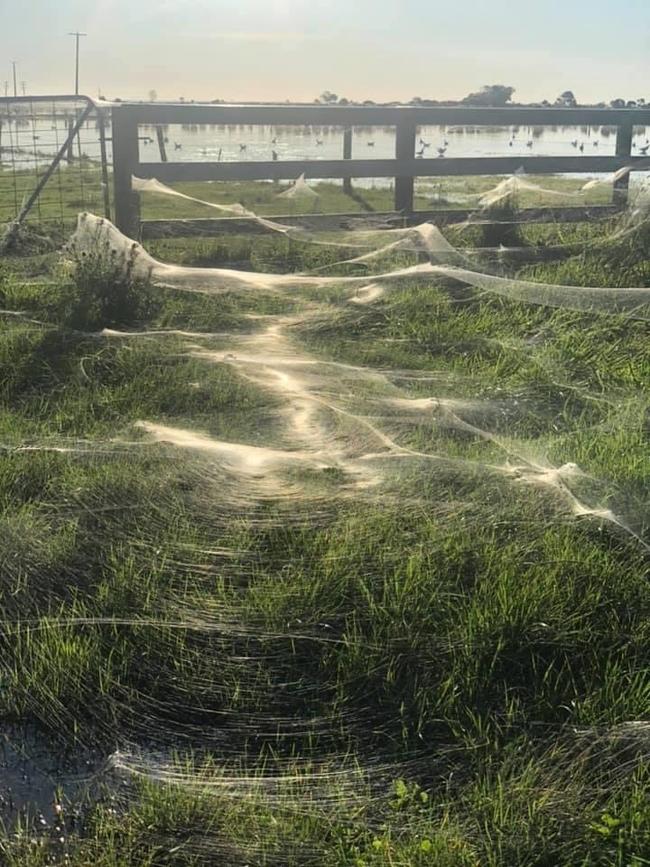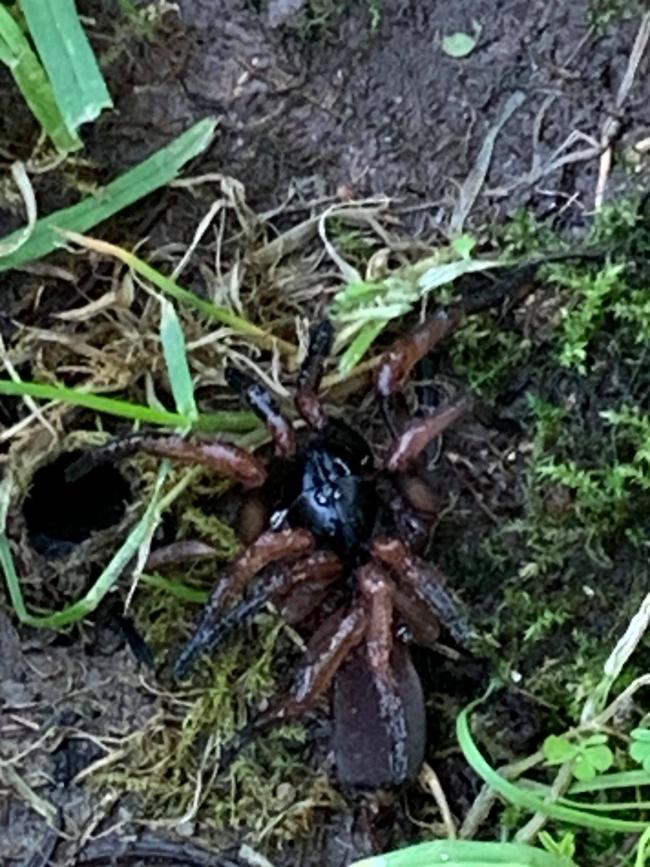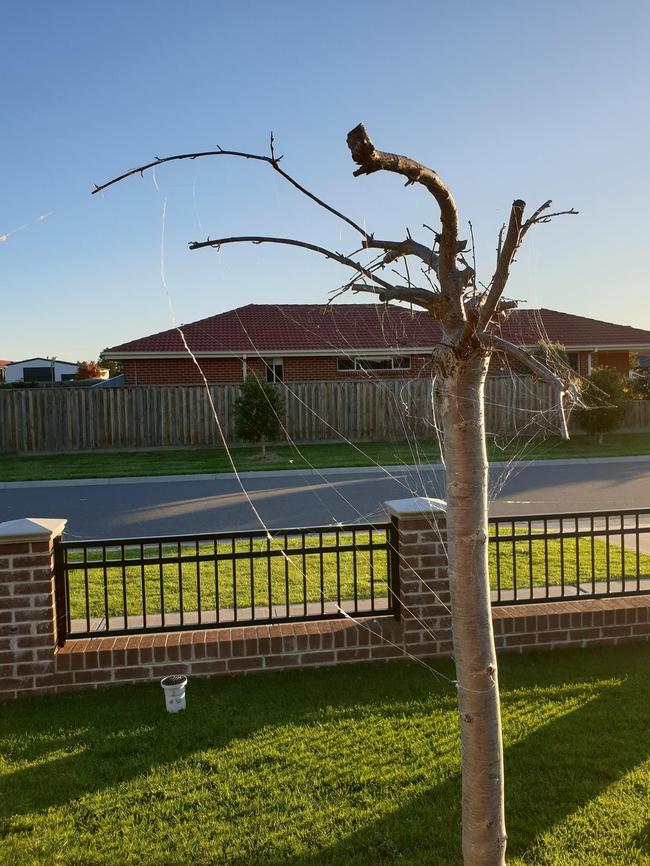Homeowner fears toxic trapdoor spiders have returned to her yard
This mist of web may look beautiful, but a Pakenham woman hoped it wasn’t a sign hundreds of venomous spiders, which infiltrated her yard six months ago, had returned. So she tried a “little trick” to find out.

South East
Don't miss out on the headlines from South East . Followed categories will be added to My News.
A Melbourne mum who last year unearthed huge trapdoor spiders and mass webs while digging in the garden says the creepy creatures are again emerging daily.
“Someone told me they will come back once the ground starts stiffening up again, so last week after the rain I noticed some new holes that I recognised oh too well,” the Pakenham woman said.
Janelle, who doesn't want her surname published, said she was hoping it wasn’t a return of the trapdoors. But her fears were realised when did a “little trick out of curiosity”.
“(I poured) warm water into the holes – which is what helped get rid of them last year,” she said.
“Boom! Up to the surface crawls out a giant female.”


Experts say while the spiders were mostly non-aggressive — and not as venomous as the Sydney funnel-web — the Melbourne trapdoor spider could deliver a painful bite if threatened. Pets are most at risk and can get ill from a bite.
The female trapdoor spider tended to remain in or near their burrows and would only venture out if dug up or flooded, but males could go wandering looking for a mate.
Janelle's discovery of a fresh infestation comes as a blanket of spider webs are appearing along paddocks, trees and even powerlines in Melbourne’s southeast.
Hundreds of photos of the webs have emerged on social media in suburbs including Pakenham, Officer, Koo Wee Rup, Lang Lang and other nearby suburbs.
Museum Victoria senior curator of insects and spiders Dr Ken Walker said it was known as “ballooning”.
“Ballooning is a technique for how spiders disperse, when spiderlings are very young they let out silk from the end of the abdomen and they continue to let it out until the uplift of the wind drafts,” Dr Walker said.
“It’s a relatively unique experience where they all get picked up by the wind and transported several kilometres and their silk is spread out along vegetation.”
Dr Walker said spiderlings including linyphiidae spiders were harmless.
“The only dangerous spiders are redbacks and the Sydney Funnel-Web, spiderlings are harmless.”
“The webs get blown away once the wind comes, so this is a temporary phase.
“These spiderlings last up until a year, in spring they will mature into their sexual phase and be able to breed.”
Plebeney Young, who found parklands in Lang Lang blanketed with the webs, told Leader she had “never seen anything like it”.

“It looked like silk through the paddocks, spooky but beautiful,” she said.
Jess Mastrangioli, from Koo Wee Rup, who found the webs on a tree in her front yard, said she wasn’t “too concerned” about it all.
“I think they’re eerilie beautiful, not too concerned about spiders. It’s been a wonderful learning opportunity for the kids while they’ve been home,” she said.
Jane Pinkerton wrote on Twitter: “This morning there is a sheet of spider webs over the paddock.
“Ballooning occurs at the onset of cold weather. Baby spiders climb to the highest nearby object and release silk from their abdomen. Once there is enough tension in the air they let go and are carried through the air,” Ms Pinkerton wrote.
MORE NEWS
TELSTRA CUSTOMER QUOTED $30 FOR HELP TO DOWNLOAD COVIDSAFE
